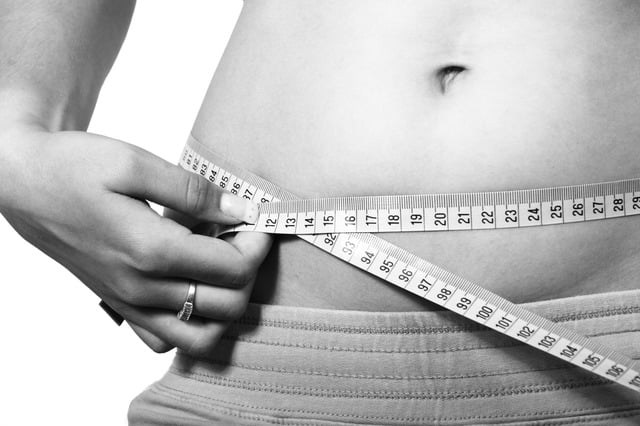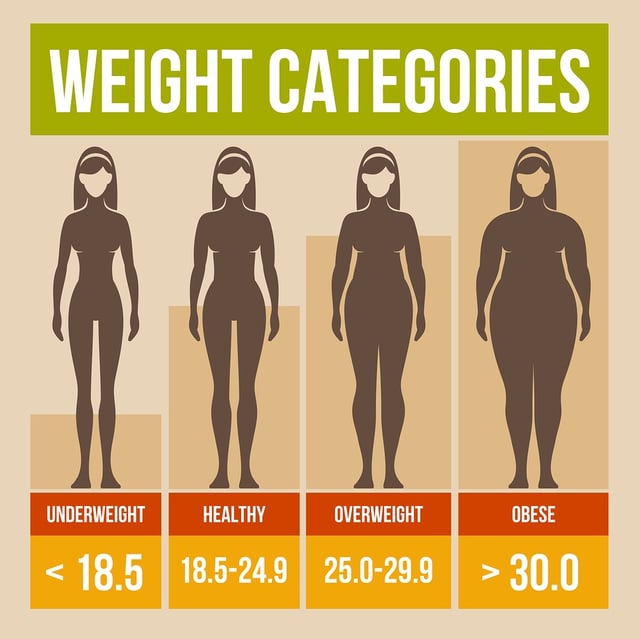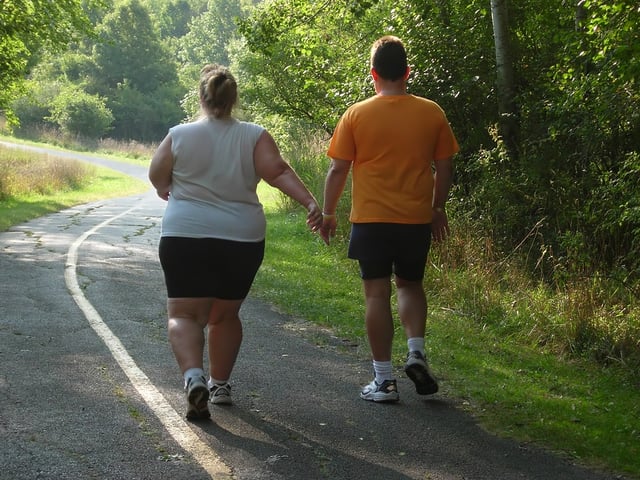
You’ve heard about Body Mass Index (BMI) and you may even know what your BMI is - but do you know what, exactly, BMI is or what your BMI means?
What You Need to Know about BMI
Body Mass Index is simply one way to measure a person’s body fat percentage based on their weight compared to their height. BMI doesn’t directly measure body fat, but it is strongly correlated with how likely you are to deal with certain metabolic and disease outcomes, according to the Center for Disease Control.It’s used for all adults aged 20+, meaning that regardless of your gender, body type or age, you may fall into one of the following categories: underweight, healthy weight, overweight, or obese.
Gender Differences in Body Mass Index
This is a problem, though, because men and women’s bodies are not created equally. Women naturally have more body fat than men as a result of biology, even at the same body mass index.
The Center for Disease Control and World Health Organization prefer to use rigid percentages to measure BMI because it makes calculations simple. Some scientists argue that women and men should use different calculations due to median BMI differences and statistical fairness. Different experts argue that the female BMI threshold for overweightness should begin at 30%, 33%, or 35% because even if a woman and a man are the same height and weight, they are unlikely to have the same BMI due to female biology causing extra body fat.
What BMI Measures
BMI is used as an inexpensive tool to indicate the level of body fatness and to screen for weight categories which might lead to health complications. However, body mass index does not diagnose body fatness or an individual’s health, so you would need to visit a healthcare provider to determine whether or not your BMI is a risk to your health. Your physician may assess your health and body fatness by measuring the thickness of certain body parts, evaluating your level of physical activity, type of diet, and family health history.
BMI Formula
BMI is calculated by dividing your weight (pounds) by the square of your height (inches), then multiplying by 703. The formula is {Weight (lb) / [Height (in)2]} x 703.
As an example, a woman who is 5’4” tall and weighs 140 lbs would have a BMI of 24.02%:
Weight = 140 lbs.
Height = 5’4” (64”).
Weight (lb) / [Height (in)2] x 703
= {140 / [642]} x 703
= {140 / 4,096} x 703
= 0.0341796875 x 703
= 24.02%
Body Mass Index Categories
|
18.5% |
Underweight |
|
18.5%-24.9% |
Healthy Weight |
|
25%-29.9% |
Overweight |
|
30%+ |
Obese |
More Facts on BMI
- The National Heart, Lung and Blood Institute assesses overweightness using waist circumference, BMI, and risk factors for conditions associated with obesity.
- You can use the same formula of {Weight (lb) / [Height (in)2]} x 703 to calculate BMI for children but the percentile ranges for underweight, healthy weight, overweight and obese are different from that of the adult ranges.
- Even if your BMI is not in the “underweight” range, you can still become malnourished if you don’t eat healthy meals
If Your BMI is <18.5% (Underweight)
Falling under the “underweight” category does not necessarily mean you’re unhealthy. As long as you are on a good diet, have no chronic medical issues, and are cleared as “healthy” by a healthcare professional, you may be just fine with a BMI of under 18.5%. However, if you’re malnourished - suffering from unbalanced or inadequate nutrition - you face higher risks of:
- Heart attack
- Thinning of the bones
- Infertility of lack of periods
Women specifically are already at greater risk of osteoporosis and heart attack which is why you should consult a physician if you are concerned you may be malnourished.

If Your BMI is 18.5%-24.9% (Healthy Weight)
Remember that body mass index is not the be-all, end-all of health measurement. To be healthy at any BMI, you should eat a nutritious and well-balanced diet, exercise, and refrain from excessive smoking and drinking. If your BMI is on the upper end of the limit and increases from 24 to 25, you may face increased risks of developing:
- Type 2 diabetes
- High cholesterol
- Some cancers
- High blood pressure (hypertension)

If Your BMI is 25%-29.9% (Overweight)
Just as being underweight does not necessarily mean you’re unhealthy, neither does being overweight mean you’re unhealthy. One problematic factor of BMI is that it does not differentiate between weight due to fat and weight due to muscle. If you lift weights, bodybuild or engage in any other muscle-building activity, your extra muscle may be causing your BMI to fall under this category.
That said, for people who are overweight and have two or more risk factors, the National Institute of Health’s guidelines recommend weight loss. Losing even a small percent of your current weight - 5% to 10% - will make a difference in lowering your risk of developing conditions associated with obesity. Risk factors include:
- Cigarette smoking
- Family history of premature heart disease
- High blood glucose (sugar)
- Low HDL-cholesterol ("good" cholesterol)
Measuring your waist circumference can help you determine whether or not you’re overweight since it directly measures your abdominal fat rather than relying on a simplified BMI chart. If more of your abdominal fat is around your waist than at your hips, you are at increased risk of developing type 2 diabetes and coronary heart disease. For women, this risk increases with a waist measurement of 35+ inches.
To correctly measure your waist circumference:
- Stand up
- Wrap a tape measure around your middle, just above the hip
- Breathe out
- Measure
A healthcare professional can correctly measure your waist circumference if you are unsure about the measurement you took.

If Your BMI is 30% or More (Obese)
Again, some people argue that the BMI cutoff for the “overweight” category for women should begin at 30%-35%. Due to the design limitations of body mass index, you may fall under this category and be completely healthy if you have no chronic health issues, enjoy a well-balanced and healthy diet, and exercise often. Still, individuals who are obese are at a greatly increased risk for multiple health conditions, such as:
- Osteoarthritis (degenerative joint disease)
- Stroke
- Breathing problems, including sleep apnea
- Chronic inflammation
Since the 1970s, the prevalence of adult obesity has continued to increase. Although this trend has recently leveled off, the prevalence of obesity in women aged 60 and older has continued.
BMI Limitations
There is a fairly strong correlation between body fatness and BMI yet two people with the same BMI may have differing levels of body fatness as previously mentioned. In addition to gender differences between women and men, there are racial differences as well. At the same BMI, people who are Asian have more body fat than people who are White, and people who are White have more body fat than people who are Black. Likewise, there are differences based on age as well: younger adults tend to have less body fat than older adults even at the same BMI. Due to these intersectional differences, you can see how a 30 year old white woman may have more body fat than a 30 year old black woman even at the same BMI.
A relatively high BMI can be due to either high lean body mass or high body fat, but a very high BMI is very likely only due to high body fat. For this reason, BMI is most accurate when dealing with high percentages.
Remember the limitations of this BMI chart for women when calculating your own BMI. If you are concerned about your health and/or BMI, Home Bistro’s well-balanced meals can make it easier to lose weight, build muscle, and get healthy. Check out the Lifestyle Diets menu today to discover how Home Bistro’s meal plans can keep your BMI in the “healthy” range.



